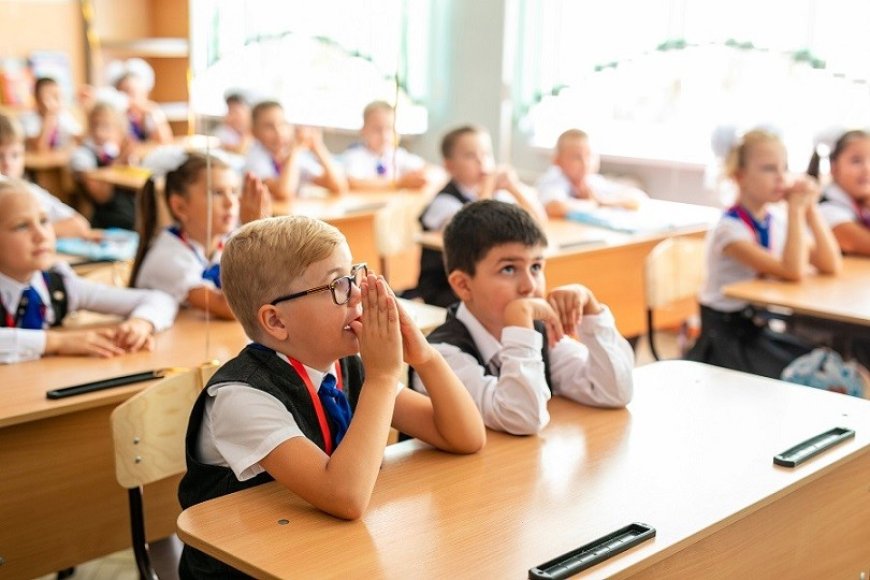The modern education system in western countries
The modern education is essentially the education system which helps students in all years advance in both, academically and professionally.

The modern education is essentially the education system which helps students in all years advance in both, academically and professionally. Western countries refer to multiple different regions, but the majority of them are in Europe and North America. As someone who lives in the United Kingdom, the education system is very up to date and the community is vastly diverse with many different races, however the education system falls short at catering to them without being Eurocentric.
The primary benefits of adopting western-style education and best practices in the Gulf is to help produce a qualitative shift in the learning styles of the students to steer them away from rote memory as the sole tool of learning and to encourage them to become self-reliant and independent thinkers. The modern education system also broadens up the minds of the people and make them think rationally instead of blindly supporting superstitious beliefs-making people more civilised and open minded. Also, it can introduce people to new ideas and innovations which widens the periphery of learning. Modern education is a dynamic way of learning, enabling students to learn a lot faster, the interaction between student and teacher helps students understand better as well. Enabling students to participate in physical activities in order to improve their efficiency. One of the limitations of the educations system in the western countries are that there is less attentions being paid to indigenous traditions and culture as the curriculum is very Euro-centric, especially History related subjects. Another one is that it has minimized ethical and moral values.
The education in western countries is very different to eastern countries (Russia, China, North Korea and so many more!) as they have different ways of learning. One of the several ways of learning which they use frequently is ˜passive learning™. This means that a student will read and listen the material and reflect internally without further reflection back or reviewing. Western countries mainly use ˜active learning™. Active learning is an approach to instruction that involves actively engaging with the course material through, discussion, problem solving, case studies, role plays and other methods. Active learning helps in developing Higher Order Thinking Skills, which may include analysis, synthesis, evaluation, public speaking and collaboration. On the other contrary, passive learning often develops, Lower Order Thinking Skills in students, which may include defining, describing and writing skills. Passive learning allows for more information to be presented in a lesson as the teacher has more authority and allows for an organized presentation of the topic. Evidence that active learning is more effective than Passive learning/a lecture for helping students learn stretched back more than twenty-five years (Bonwell, 1991).
The pandemic that started near the end of January 2020 that practically ruined the education for almost all students (not only in Britain) but all around the world as most countries over the globe had to result in online learning by using zoom or another form of platform. This led to a lot of students waking up late, not joining the call, internet connections being disturbed and so many more. Some people would also not pay attention and use google when asked a question. There would occasionally be one or two tests during this whole online learning process due to it being so difficult to actually do one as the pupils could not physically do the test in class regarding the restrictions that was advised and the restrictions that the government set. For most students, their learning has suffered to at least some degree. Teachers™ estimations indicate that while a small proportion of students made learning gains, most students had learning losses. For me, the whole online learning phase was a big let-down as I did not gain much knowledge as I would have gotten if it was face to face. In my opinion it would have been better if everyone wore a mask in school and did their learning there instead of being in front of a computer screen the whole day as it can affect your mental wellbeing. On the other hand, some of the benefits of online learning were that pupils developed new technical skills.
The Pakistani education system has similarities in structure to that used in Britain, with a very diverse system of teaching that caters to students. Some limitations of Pakistan™s education system are that Pakistan has a lack of adequate budget, lack of policy implementation and poor physical facilities. Another major problem with Pakistan is its poor literacy. There are many reasons for the low literacy rate in Pakistan like poverty, population, expansion, feudal lords, low allocations and male-dominated society. Poverty is the biggest disadvantage and the largest resistance in the development of a country. More importance needs to be given to the education system to improve literacy rates and help students advance.
